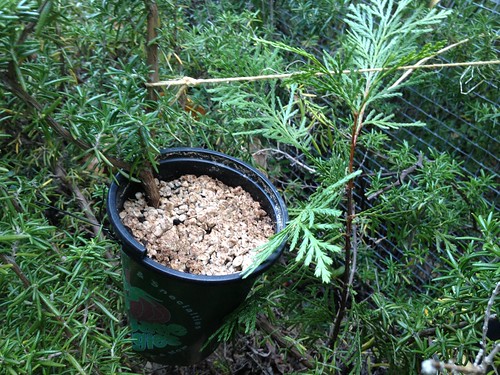I’ve been spending long hours in the garden, puttering and propagating, and lately doing a lot of layering. This propagation technique seems particularly suited for plants that are inclined to root from cuttings, and for those that readily root when their branches bend down and come into contact with soil. I simply slice a plastic pot stem to stern, cut a hole in the bottom big enough for the branch, remove any leaves or small branches that might otherwise rot when exposed to damp conditions in the pot, wound the branch by scraping or cutting away some of the bark, wire the pot shut at the top and bottom to hold it together, and fill it with a planting medium of primary perlite.
Pictured above is such an arrangement on a prostrate rosemary (Rosmarinus officinalis). Rosemary grows especially well here, requires no irrigation at all once established, and provides spring forage for bees, who swarm its blue blossoms early in the season when nothing else is blooming. The twine is simply support. I’ve got a similar setup on the established, productive pomegranate, and I’m trying one on the Arbequina olive, which according to some accounts is easy to root – I’ve had little luck to date, but am hopeful.



Pingback: Rosemary Rooting | food|forest|garden